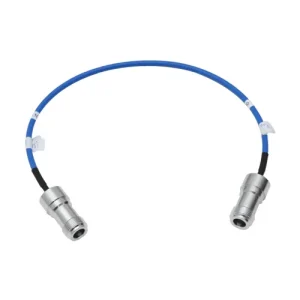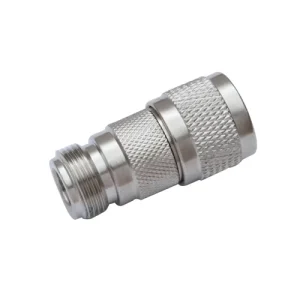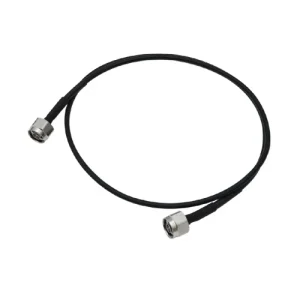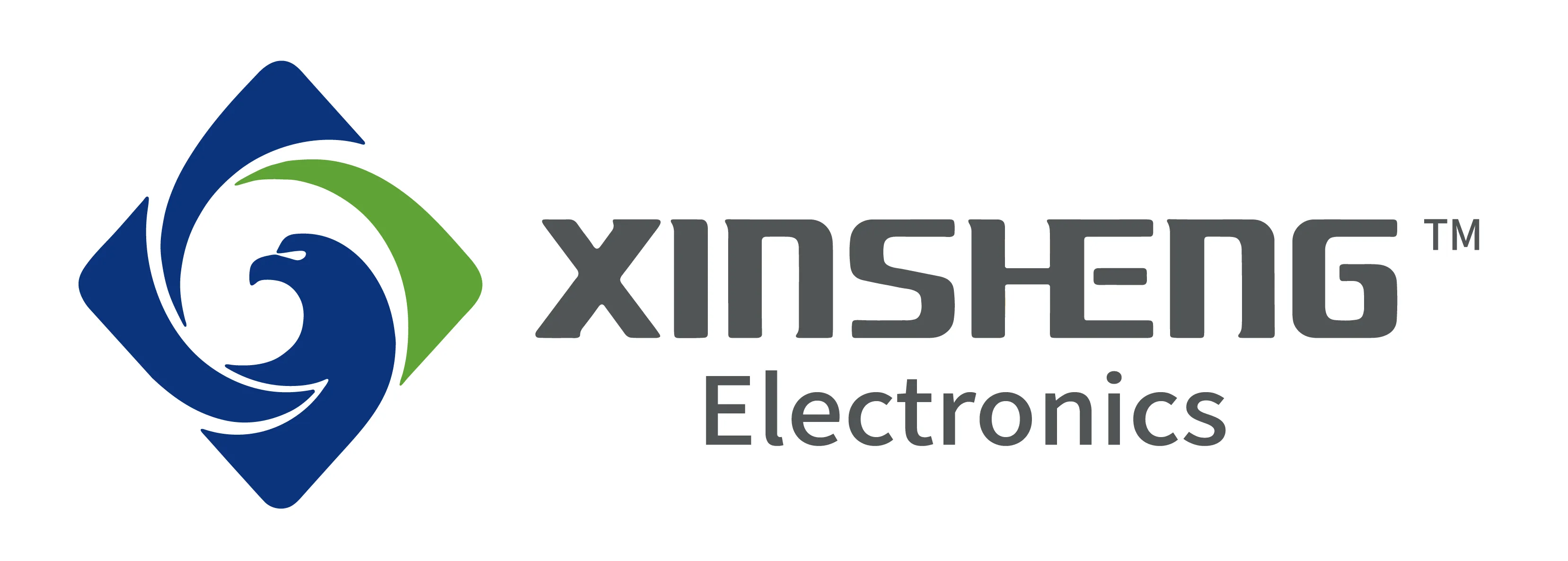Everything You should Know About Rf Connector and Cable Assemblies
Radio Frequency (RF) connectors and cable assemblies are essential components in the world of electronics and telecommunication. They are used to transmit high-frequency signals with minimal loss. If you are involved in industries like telecommunications, aerospace, automotive, or defense, understanding RF connectors and cable assemblies is important. This blog will explain everything you need to know about them in simple terms.
What Is an RF Connector?
An RF connector is a type of coaxial connector that is designed to work at radio frequencies. These connectors help in connecting different parts of an RF system, such as antennas, cables, and equipment. They play a major role in signal transmission.
RF connectors are designed with precise dimensions to maintain the characteristic impedance, typically 50 or 75 ohms. This impedance matching is crucial in avoiding signal reflections that can degrade performance. They also provide shielding to minimize signal interference from external sources. These features make RF connectors highly effective in transmitting clean, high-frequency signals.
In addition to their electrical performance, RF connectors must also meet mechanical reliability standards. For instance, connectors used in military or aerospace applications must resist vibration, temperature variation, and corrosion. Manufacturers often use high-grade metals and special plating to ensure long-term durability and consistent contact resistance.
These connectors come in various locking mechanisms such as threaded, bayonet, push-on, and snap-on types, each suited for different operational environments. Selecting the appropriate mechanism ensures ease of use and a stable connection over time, especially in applications involving frequent mating and de-mating cycles.
What Is an RF Cable Assembly?
An RF cable assembly is a complete set that includes an RF cable and connectors attached to both ends. These assemblies are used to carry RF signals from one point to another. They are available in various lengths, designs, and specifications, depending on the application.
RF cable assemblies are used in both indoor and outdoor installations. They are customized based on requirements such as operating frequency, cable length, and connector type. High-quality assemblies offer durability, low signal loss, and resistance to environmental conditions like moisture, heat, and UV radiation. These cable assemblies ensure reliable signal transmission over short and long distances.
Another aspect to consider in RF cable assemblies is their flexibility and bend radius. Applications in tight spaces or moving equipment may require ultra-flexible cables. In contrast, fixed installations may benefit from more rigid, low-loss cables that preserve signal quality over long distances. Understanding these mechanical and electrical properties helps in selecting the right assembly for specific applications.
Additionally, some RF cable assemblies come with armored jackets for enhanced protection in harsh industrial settings, while others are designed with fire-retardant materials for safety in indoor environments. Cable labeling, color coding, and connector marking are also helpful for easy identification during installation and maintenance.

Types of RF Connectors
There are many types of RF connectors. Each type has different properties and uses. Here are some common types:
SMA Connector: Small and lightweight, SMA connectors are commonly used in mobile communication, GPS devices, and test instruments. They are known for their high-frequency handling up to 18 GHz.
TNC Connector: The Threaded Neill–Concelman (TNC) connector is a threaded version of the BNC. It provides better performance in environments with vibration and supports frequencies up to 11 GHz.
N-Type Connector: Larger in size and highly durable, N-type connectors are suitable for outdoor use and high-power applications. They can handle frequencies up to 11 GHz.
BNC Connector: Bayonet-style connectors that are easy to connect and disconnect. They are widely used in RF test equipment, video signals, and short-range communication.
Other connectors include MCX, MMCX, F-type, UHF, and 7/16 DIN. Each has unique advantages depending on frequency range, size constraints, and application needs. For instance, 7/16 DIN connectors are ideal for high-power applications due to their low passive intermodulation (PIM) characteristics.
It’s also important to note the difference between male and female connectors. Male connectors typically have a center pin and screw thread on the inside, while female connectors accept the pin and have a screw thread on the outside. Ensuring compatibility between connector pairs is essential for optimal performance.
Some applications require quick-disconnect features, especially in lab environments where test setups change frequently. Others may prioritize waterproofing and corrosion resistance for outdoor and marine use. Knowing the demands of your project will help you select the best connector.

Types of Coaxial Cables Used in RF Assemblies
Coaxial cables are the backbone of RF cable assemblies. They consist of a central conductor, dielectric insulation, outer conductor (shielding), and outer jacket. Some popular types include:
RG-58: Commonly used in low-power signal connections. It has a characteristic impedance of 50 ohms and supports frequencies up to a few hundred MHz.
RG-174: Thin and flexible, RG-174 is used in compact or portable electronic equipment. It’s ideal for short connections and tight spaces.
LMR-400: A low-loss cable suitable for long cable runs. It provides excellent shielding and can be used in both indoor and outdoor environments.
RG-6: Typically used for cable TV and broadband internet connections. It features 75-ohm impedance and supports high-frequency signals over long distances.
When choosing a coaxial cable, you must consider both the electrical and environmental requirements. For example, in outdoor environments, UV-resistant jackets and waterproof seals are essential. For high-frequency applications, cables with solid copper conductors and low dielectric loss materials offer better performance.
There are also double- or triple-shielded coaxial cables that provide extra protection from interference. These are particularly useful in high-density electronic environments like data centers and broadcasting stations. In some cases, low-smoke, zero-halogen (LSZH) cables are required to meet fire safety standards.

Key Features of RF Connector and Cable Assemblies
- High-Frequency Support
- Low Insertion Loss
- Impedance Matching
- Shielding Effectiveness
- Mechanical Strength
Additionally, quality RF connectors and assemblies must maintain consistent electrical performance even under mechanical stress. This includes factors like repeated mating and unmating cycles, pulling force on the cable, and exposure to extreme temperatures.
Environmental sealing is another important feature. Some assemblies use rubber gaskets or O-rings to prevent moisture or dust from entering the interface, making them suitable for outdoor or industrial applications.
Many assemblies are also tested for signal integrity under environmental simulations like high humidity, salt spray, and rapid temperature changes. These tests ensure that the performance remains stable under real-world conditions.
Applications of RF Connectors and Cable Assemblies
RF connectors and cable assemblies are used in a wide range of industries:
- Telecommunication
- Aerospace
- Automotive
- Military and Defense
- Medical Devices
- 5G and IoT Applications
These components are also crucial in broadcasting, laboratory instrumentation, industrial control systems, and maritime navigation. For example, marine radars and shipboard communication systems rely on rugged RF assemblies to withstand saltwater corrosion and constant movement.
Smart meters in utility networks also depend on RF cable assemblies to communicate usage data wirelessly. In home automation systems, these cables link wireless modules with antennas hidden behind walls or ceilings, ensuring seamless connectivity.
How to Choose the Right RF Connector and Cable Assembly
Choosing the right connector and cable is very important. Here are some factors to consider:
- Frequency Range
- Cable Length
- Impedance
- Power Handling
- Environmental Conditions
- Connector Type
Other selection criteria include temperature rating, cable flexibility, fire resistance, and ease of assembly. For critical systems, certifications and compliance with international standards (like MIL-STD or IEC) may also be required. For long-term projects, availability and lead time are important. Sourcing reliable and standardized components ensures scalability and easy maintenance.
In addition, some applications may benefit from pre-assembled, tested cables to avoid human error during installation. Custom cable assemblies with special lengths, connectors, and performance specifications can also be ordered from trusted suppliers.
Benefits of Using Quality RF Components
- Better Signal Transmission
- Reduced Downtime
- Improved System Performance
- Longer Life Cycle
- Cost-Effective in the Long Run
By selecting the right RF components, engineers can enhance performance while also ensuring compliance with safety and reliability standards. Over time, these improvements can significantly impact operational efficiency and cost management.
Using high-quality connectors also reduces the chance of intermittent faults, which can be hard to diagnose and result in lost productivity or disrupted services. This reliability is critical in sectors like healthcare, aviation, and broadcasting.
Common Mistakes to Avoid
- Using the Wrong Connector Type
- Ignoring Impedance Matching
- Overlooking Cable Quality
- Improper Installation
- Lack of Testing
Professional assembly, calibration, and periodic inspection are key to preventing performance degradation. Use proper tools, follow guidelines, and keep connectors clean to maintain quality. Maintaining detailed documentation and labeling helps prevent mismatched parts and simplifies future troubleshooting.
Also, remember to follow manufacturer torque specifications for tightening connectors. Over-tightening can deform the components, while under-tightening may result in poor connections or signal loss.
RF Technology Is Evolving
The world of RF technology is always changing. With the growth of modern wireless systems, the need for high-quality RF components is growing fast. Smart cities, connected vehicles, and high-speed communication systems are all using RF cable assemblies and connectors.
Future trends include:
- Miniaturization
- Higher Frequencies
- Increased Data Rates
- Flexible Cables
As technology advances, so do the standards for RF components. Emerging industries such as wearable tech, autonomous vehicles, and quantum computing will all require next-generation RF solutions.
The development of new materials, such as low-loss dielectrics and improved shielding techniques, is also helping push the limits of performance. As signal frequencies approach millimeter-wave levels, maintaining signal integrity becomes even more challenging—and important.
Why Choose XINSHENG for RF Connectors and Cable Assemblies?
XINSHENG Electronics is a trusted provider of RF connectors and cable assemblies. We focus on quality, performance, and reliability. Our products are used in various industries like telecommunication, aerospace, and industrial automation.
We provide:
- Customized solutions for unique customer requirements.
- Strict quality control to meet international standards.
- Fast and safe delivery worldwide.
- Technical support for product selection and application.
We understand the importance of every connection. From prototype to mass production, our expert team ensures that each assembly meets customer expectations for performance and reliability.
Whether you’re building a communication tower, developing a wireless medical device, or designing the next generation of connected vehicles, our solutions are built to support your mission.
Conclusion
RF connectors and cable assemblies are essential for modern communication systems. They play a key role in signal transmission, system reliability, and performance. By choosing the right components and maintaining quality, you can ensure the best results for your applications.
With the rise of smart technology, the demand for high-quality RF products will only continue to grow. Whether you are in telecom, aerospace, automotive, or any other industry, understanding RF components gives you a competitive advantage.
Stay connected. Choose the best. Choose XINSHENG RF solutions.



